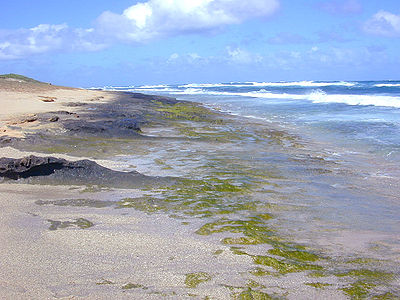These possible ancestors of the land plants are also known as brittleworts or skunkweed. These curious labels arise from the fragility of their lime-encrusted stems, and from the foul odor these produce when stepped on.
Many botanists propose that the stoneworts and their relatives be placed in a phylum, division, sub-kingdom, or even kingdom by themselves, often named Charophyta. Their classification by taxonomists is currently undergoing much cladistic scrutiny. Further DNA and RNA analysis may prove the charophytes to be a crucial evolutionary link in the phylogenetic tree of life, the critical developmental step from the seaweeds toward the vascular and non-vascular land plants.
References
Groves, J., and Bullock-Webster, G.R. 1920. The Charophyta. Vol.1. Nitellae. London, The Ray Society.
Groves, J., and Bullock-Webster, G.R. 1924. The British Charophyta. Vol.2, Characeae. London, The Ray Society.
Morton, O. 1992. Charophyta. pp.91 - 94 in Hackney, P. (Ed) 1992 Stewart and Corry's Flora of the North-east of Ireland. Third edition. Institute of Irish Studies. The Queen's University of Belfast.
Stewart, N.F. and Church, J.M. 1992. Red Data Book of: Stoneworts. The Joint Nature Conservation Committee, Peterborough.


